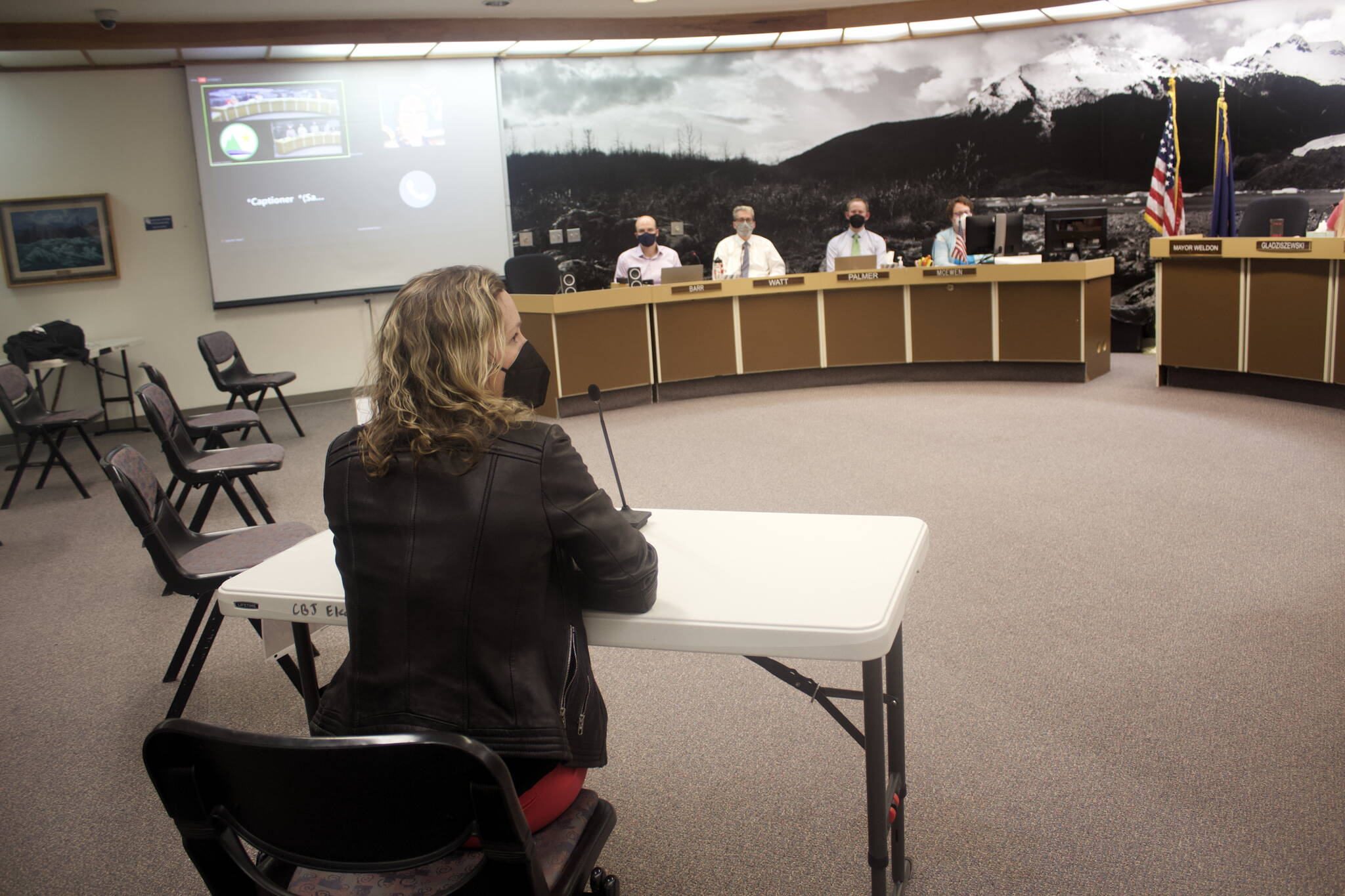An effort to establish the world’s first cruise ship “green corridor” between Seattle and Juneau, with a goal of net-zero emissions by 2050, was announced Tuesday by a large group of government and industry entities collaborating on a feasibility study for the project.
Using alternative fuels, establishing green infrastructure in ports and investing in developing emissions-reducing technologies are among the efforts that will be part of the feasibility study, according to U.S. and Canadian officials presenting the concept during a press conference. The collaboration was also presented to the City and Borough of Juneau Assembly at its Monday night meeting by Alexandra Pierce, the city’s tourism manager.
“This is a really positive opportunity for collaboration, and a really positive opportunity to help other ports start thinking about their long-term plans, and what their infrastructure and needs might be for this green corridor,” she said.
Pierce added: “We were the first port in the world to have shore power and I think it is appropriate we’re the first to have this too.”
Officials at the Port of Seattle contacted Juneau city officials several months ago about using the region for the feasibility study, she said. Pierce said the passage, including waters in British Columbia, is ideal because of the varying levels of infrastructure development in ports and the relatively small number of government entities necessary for an experimental collaboration.
“What works for Seattle won’t work for Juneau and what works for Juneau won’t work for Hoonah,” she said. “This is true of cruise networks throughout the world and we need to establish a model for ports with varying levels of development.”
Shipping currently accounts for 3% of global emissions, but that is projected to increase to 17% by 2050 “unless pressing actions are taken now,” said Port of Seattle Commissioner Fred Felleman. He noted northern latitudes including Alaska are suffering some of the worst impacts of climate change, adding to the reasons the area is ideal for the feasibility study.
“While these initial steps of creating a green corridor are small, these first movers here today are coming together around the need to address the biggest issue of our time,” he said.
Among the other partners in the collaboration are the Vancouver Fraser Port Authority, Global Maritime Forum, Carnival Corp. (whose brands include Princess Cruises, Holland America Line, Carnival Cruise Line, Seabourn and Cunard), Norwegian Cruise Line Holdings, Royal Caribbean Group and Cruise Lines International Association.
The green corridor concept is already underway in other ship-related industries, primarily cargo traffic. A declaration signed by 24 countries, including the U.S. and Canada, introduced last November at the COP26 conference in Glasgow pledges to support creating at least half a dozen “green corridors” by the middle of the decade and furthering efforts by 2030.
A report issued that same week by the Getting to Zero Coalition states green corridors potentially offer enough scale and volume for significant impacts by including all entities including fuel producers, vessel operators, cargo owners and regulatory authorities. The study asserts improving vessels’ energy efficiency by upgrading ship design and propulsion systems may reduce per-ton/mile emissions between 15 and 55%.
Pierce, in a letter to the Assembly, noted “the green corridor concept is less straightforward for cruise than for shipping.”
“While the cruise industry has made decarbonization commitments (zero carbon industry globally by 2050, all ships will be shore power enabled by 2035), cruise ships operate in dispersed and diverse areas, making the traditional green corridor model challenging in some areas and not feasible in others,” she wrote. “Therefore it makes sense that someone, somewhere needs to develop a phased road map to meet those commitments.”
Significant reductions in cruise ship environmental impacts have occurred in recent years in areas such as the extreme polar regions where stringent rules such as heavy oil bans and access restrictions have been officially imposed. Many cruise operators in those areas are also implementing voluntary measures such as the onboard elimination of single-use plastics and encouraging environmental-friendly shore activities for passengers such as litter cleanups.
Kelly Craighead, president and CEO of Cruise Lines International Association, said many rules imposed in those regions are being adapted by operators in other destinations.
“I think that’s one of the great untold stories of the cruise industry — how regulated cruise agencies are around the world,” she said.
CLIA is working with seven other international agencies on research and funding for emission-reduction efforts, including pursuing technologies that don’t yet exist, Craighead said.
Juneau Assembly members on Monday generally expressed enthusiasm about the idea, but questioned some details.Assembly member Greg Smith asked if there is “an expectation of financial contributions by partners?’
“Not at this stage,” Pierce replied. “As this process takes shape and the project takes form we’ll have more of an idea what it looks like.”
Government and cruise industry representatives participating in Tuesday’s news conference emphasized the announcement of the feasibility study is a first step and further steps will guide financial decision-making.
“The first step is determining the feasibility of this,” Craighead said.
Felleman, in a written comment during the press conference, stated “it’s important to note that the ports have already made significant infrastructure investments such as shore power.”
The federal government is supportive of and a potential source for some funding, according to Pierce and other officials participating in Tuesday’s press conference.
“Really where they’re engage is trying to promote these types of initiatives in the region,” said Jennifer States, vice president of products and strategy for Washington Maritime Blue, a company specializing in sustainable marine industry development.
• Contact reporter Mark Sabbatini at mark.sabbatini@juneauempire.com.

